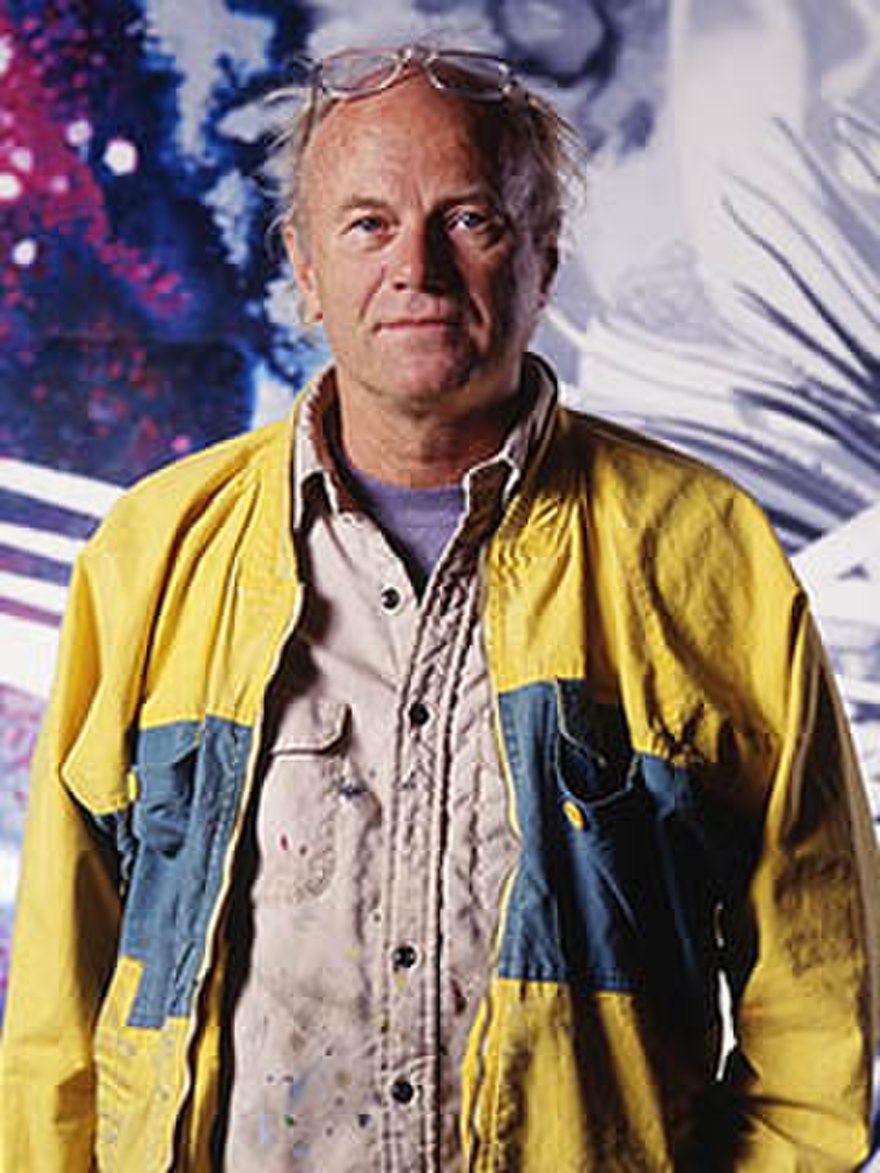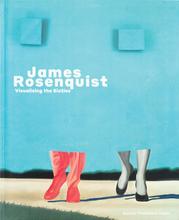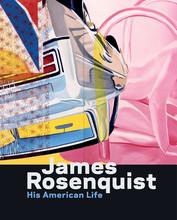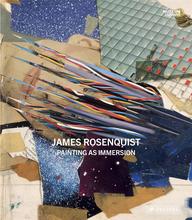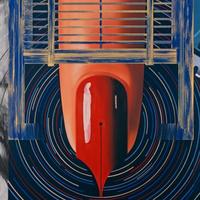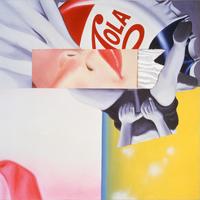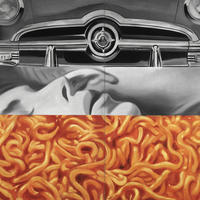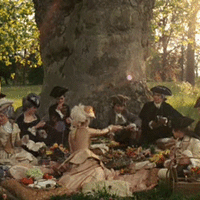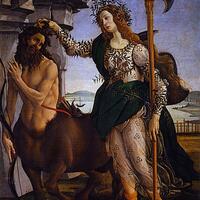More about James Rosenquist
- All
- Info
- Shop
Works by James Rosenquist

Sr. Editor
“To be creative is to be accepting, but it’s also to be harsh on one’s self. You just don’t paint colors for the silliness of it all.” -- James Rosenquist
But of course, you must paint cars and women for the silliness of it all! At least James does.
A pioneer of the Pop Art movement, James asked the art world with his outlandish subjects, “Why so serious?” And that’s what Pop Art was all about: using images from advertising (think Coca-Cola ads) and popular culture (think Kim Kardashian) in fine art to ruffle a few feathers.
Ever the contrarian, Rosenquist denies being a part of Pop, since he didn’t know the other big players, Andy Warhol and Roy Lichtenstein, until he was already famous. Whatever.

Contributor
What was the late, great James Rosenquist's first impression of art? "Easy," he says in 2013, "I didn't know what the hell it was."
As a young boy, he snuck into the Minneapolis Art Institute. The exhibition that really struck him was that of the Egyptian mummies, whose original owners never imagined that they'd end up in a museum in Minnesota. They reminded him "of his grandfather, whose body was preserved in a coffin on the porch of the family house throughout one frigid Dakota winter, impossible as it was to bury him in the frozen hard ground." This was also the place that introduced him to "the enigma of collage" an art form he would spend his whole life "trying to unravel."
Rosenquist was born to aviator parents, descendants of Swedish and Norwegian immigrants to the United States. Mama and Papa Rosenquist flew planes way back in the day, when you had to really love and trust in science in order to get in one of the loud, rickety machines. An eighty-six foot image of a disassembled bomber would later become one of Rosenquist's great masterpieces - airplanes were always a fixture of his imagination. Rosenquist's mother, Ruth Clara Hendrickson, was also a painter.
His artistic family and living in North Dakota had a profound influence on the artist. In particular, he remembered what life was like without a telephone or electricity; you had to be creative to entertain yourself. In his later years, Rosenquist remembered the poverty, not unlike the poverty he endured in his early days in New York City - on the edge of starvation, but more rural. Homeless people would come by the farm, smelling his mother's cooking, and she'd make them a chicken dinner in exchange for their labor, like chopping a pile of wood. This story reminds Rosenquist of a joke: a traveler asks to see the owner of a farmhouse, and the family says the owner is outside, feeding the pigs. The farm owner is holding up a pig to an apple tree, feeding the apples to the pig one by one. "Doesn't that take a lot of time?", asks the traveler. "Sure," says the farmer, "but what's time to a pig?"
This scrappy upbringing gave Rosenquist a distinct advantage in New York: he worked hard as a billboard painter for years, while making fine art pieces for galleries which closely resembled his billboard work. He studied with the great German expatriate artist George Grosz, and was patient enough, despite his desperate poverty, to wait until the right moment for his art to "go viral." That critical moment arrived when he learned, at a seminar on Chinese history in Colorado, that the first income taxes occurred in ancient China, as a way of encouraging public participation in communal projects. Rosenquist thought, "Wouldn't it be funny if I painted a decommissioned bomber airplane and then sold it through the Leo Castelli Gallery, so people could pay for an image of something they've already paid for with their income taxes?" Eventually, this became his epic F-111 (1964-65), which covered the walls of Castelli's space in fifty-one panels. Just to be extra extra, Rosenquist put dry ice on the floor during the exhibition. He never thought that anyone would buy the whole behemoth work. Surprisingly, one of the greatest collectors of the era, the late taxicab heir Robert Scull, bought the whole thing.
Sources
- "James Rosenquist - Biography and Legacy." The Art Story, https://www.theartstory.org/artist/rosenquist-james/life-and-legacy/.
- "James Rosenquist: F-111." MoMA, https://www.moma.org/calendar/exhibitions/1233.
- "James Rosenquist, Leo Castelli, 1978." YouTube Video, 25:28, Aug. 29, 2019, https://youtu.be/XqqvdH3ubyo.
- Kastrup, Allan. The Swedish Heritage in America: The Swedish Element in America and American-Swedish Relations in Their Historical Perspective. Minneapolis: Swedish Council of America, 1975.
- McElhinney, James. "Oral history interview with James Rosenquist, 2013 March 28." Smithsonian, https://www.aaa.si.edu/collections/interviews/oral-history-interview-ja….
- Rosenquist, James. Painting Below Zero: Notes on a Life in Art. New York: Knopf, 2009.
- Sooke, Alastair. Pop Art: A Colourful History. London: Penguin UK, 2015.
- Guiducci, Mark. “James Rosenquist, Pop Art Icon, Dies at 83.” Vogue Magazine, April 1, 2017. https://www.vogue.com/article/james-rosenquist-dies-at-83.
Featured Content
Here is what Wikipedia says about James Rosenquist
James Albert Rosenquist (November 29, 1933 – March 31, 2017) was an American artist and one of the proponents of the pop art movement. Drawing from his background working in sign painting, Rosenquist's pieces often explored the role of advertising and consumer culture in art and society, utilizing techniques he learned making commercial art to depict popular cultural icons and mundane everyday objects. While his works have often been compared to those from other key figures of the pop art movement, such as Andy Warhol and Roy Lichtenstein, Rosenquist's pieces were unique in the way that they often employed elements of surrealism using fragments of advertisements and cultural imagery to emphasize the overwhelming nature of ads. He was a 2001 inductee into the Florida Artists Hall of Fame.
Check out the full Wikipedia article about James Rosenquist

